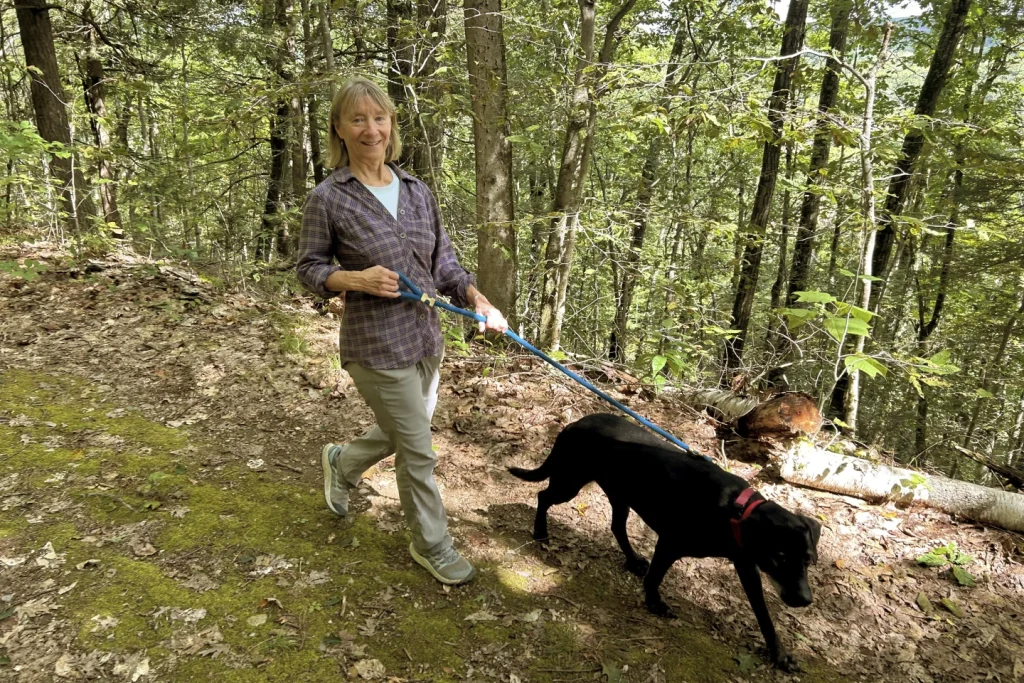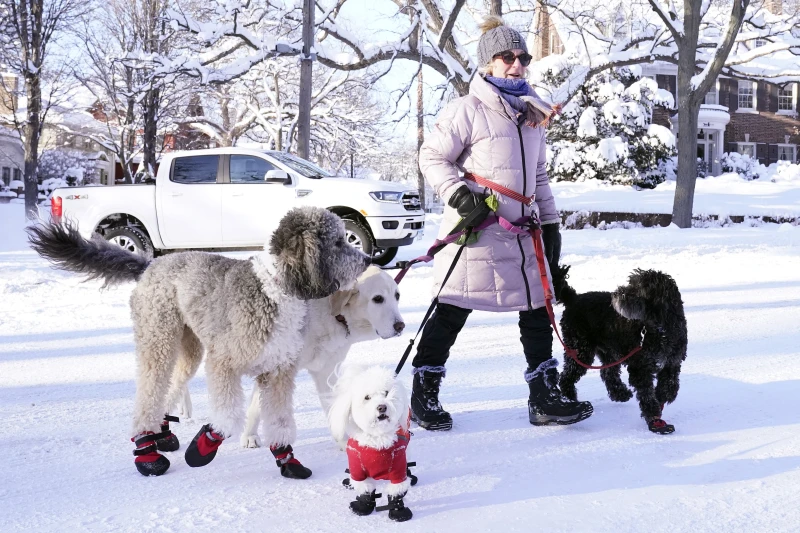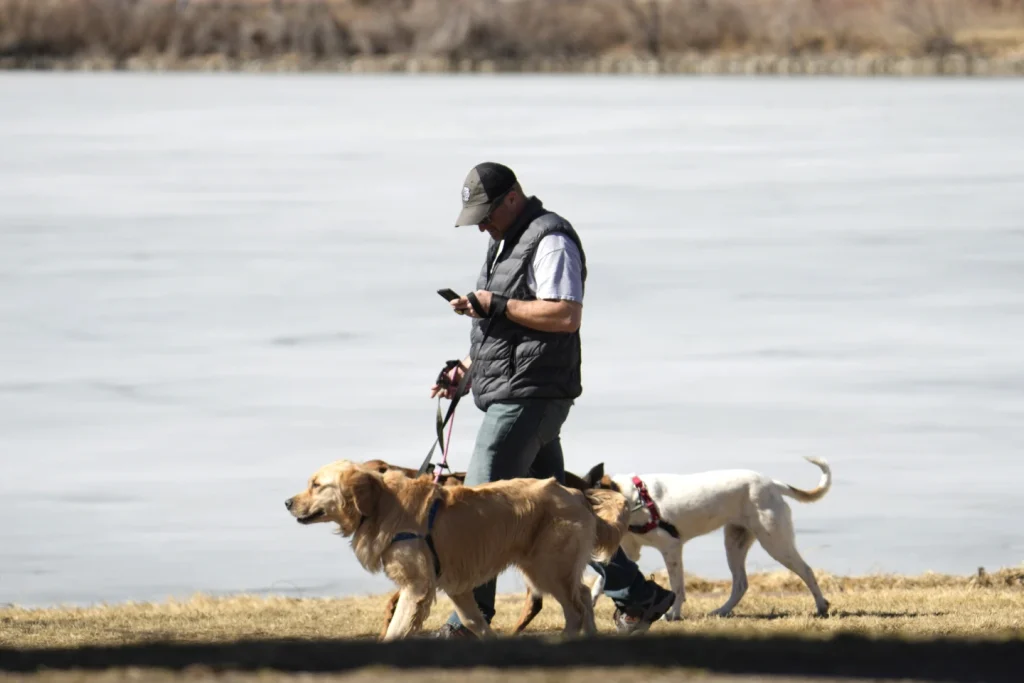Dog ownership in the United States has surged in popularity over the past decades, with approximately half of U.S. households now having at least one dog. This trend has been further accelerated by the COVID-19 pandemic, which reignited the public’s interest in companion animals.
Dogs provide a multitude of joys to their owners, including unconditional love, companionship, and an active lifestyle that revolves around outdoor activities such as walking.
However, beneath the surface of this joyful bonding experience lies a growing concern, as injuries related to dog walking have seen a significant rise in the last two decades.
According to researchers from Johns Hopkins University, the data indicates a marked increase in emergency department visits due to dog-walking injuries, highlighting an important yet often overlooked aspect of pet ownership.
Between the years 2001 and 2020, the estimated number of adults treated in emergency departments for dog-walking injuries increased from approximately 7,300 cases to 32,300 cases annually.
This surge in reported injuries is indisputable; yet, it is likely only a portion of the actual incidents, as many individuals may seek treatment at primary care or urgent care facilities instead of emergency departments.
The demographic breakdown reveals that a staggering 75% of these patients are women, with adults aged 40 to 64 years comprising nearly half of the total cases.
This demographic profile may indicate that middle-aged individuals, who are perhaps more susceptible to injuries due to a variety of factors—including physical condition and activity levels—are especially at risk during dog walks.
In articulating the nature of these injuries, fractures and sprains are among the most frequently recorded outcomes, as are various degrees of head trauma.
The complexity of the injuries sustained during what may seem like a simple activity underscores the necessity for increased awareness and preventive measures.
The nature of dog walking itself presents various risks. Many incidents stem from seemingly innocuous distractions.
For example, as chronicled in the experiences of individuals like 76-year-old Holston, the sudden actions of a dog—such as chasing after a distraction like a goose—can lead to catastrophic outcomes, including serious ankle injuries.
Susannah Johnston’s experience echoes this sentiment, demonstrating how multitasking while dog walking—such as attempting to organize personal items—can lead to severe injuries.
Moreover, the potential for injury escalates significantly when running with dogs, especially those that are not accustomed to the activity or exhibit high levels of excitement.
The anecdote of Robert Godosky, who suffered broken ribs after his rescue dog unexpectedly darted in front of him, illustrates the dangers of such scenarios.
The risks are not limited to urban environments, as Steven Haywood, an ER doctor in rural Mississippi, highlights the dangers of pedestrians being struck by vehicles while walking dogs along roads that lack sidewalks or proper lighting.
To mitigate the risks associated with dog walking, pet owners must adopt a proactive approach to safety. This entails remaining vigilant and aware of their surroundings, particularly in settings that may be ripe for injury, such as poorly lit areas or environments with heavy traffic.
Furthermore, it is vital for dog walkers to prioritize their own safety and that of their pets by avoiding common pitfalls, such as using mobile phones while out and about.
The practice of multitasking while dog walking can divert attention away from the immediate environment, leading to accidents and injuries that could be easily avoided.
The right equipment also plays a critical role in ensuring safety during walks. Owners should consider investing in appropriate footwear that provides adequate grip and support, particularly in adverse weather conditions.

Experts recommend using non-retractable leashes ranging from 6 to 8 feet, as longer leashes can become tangled around one’s legs, contributing to falls.
Additionally, wearing reflective clothing or accessories can significantly enhance visibility, particularly during dusk or dawn walks, thereby reducing the risk of traffic-related injuries.
In the vibrant and bustling city of San Francisco, renowned dog trainer Shoshi Parks advocates for a training methodology that emphasizes the use of a no-pull harness equipped with a leash secured to a dog’s chest, as opposed to the traditional attachment at the back.
This innovative approach not only enhances the walker’s control over their canine companion but also mitigates unnecessary strain on the dog, thereby fostering a more harmonious walking experience.
Parks further recommends the strategic positioning of the leash at the individual’s center of gravity—preferably near the torso, hip, or thigh—to maximize stability and leverage.
By employing a technique wherein the hand is inserted through the loop of the leash and grasped lower down for a firmer hold, walkers can ensure better management of their pets during excursions.
Parks unequivocally denounces the use of retractable leashes, categorizing them as a “no go” due to their potential to inflict burns when inadvertently held too close to the body, particularly if they are subject to rapid lengthening or retraction.
For individuals grappling with mobility or balance challenges, experts recommend enlisting the assistance of a neighbor, an older child, or even a professional dog walker to mitigate the difficulties that may arise, especially in adverse weather conditions.
Consensus among experts Johnston, Haywood, and Maxson underscores the importance of balance and strength-training exercises, particularly for older adults, as a means to reduce the likelihood of falls and fractures.

They propose that engaging with a dog trainer can yield benefits not only for the canine in question but also for the walker, who would gain invaluable insights into interpreting their pet’s body language.
As Haywood articulately posits, “Even young, healthy, strong people may have difficulty controlling larger breeds that aren’t accustomed to walking on a leash.
Any exercise to build strength and balance is going to help,” further emphasizing the necessity for each individual to ensure they can effectively manage the dog they choose to walk.
Owning a dog is an enriching experience filled with affection, loyalty, and companionship. However, as the data illustrates, dog walking can pose significant risks that require a conscientious approach to ensure the safety of both the owner and the pet.
It is essential for dog owners to be aware of their immediate environment, exercise caution, and equip themselves with the proper gear to minimize injuries.
The joy that a dog can bring should not be overshadowed by preventable accidents, and with the right mindset and precautions, dog walking can remain a safe and fulfilling activity for all involved.
As society continues to embrace the joys of dog ownership, it must also commit to fostering a culture of safety and awareness, transforming potential peril into a harmonious experience shared between humans and their beloved canine companions.
